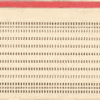All Activity
- Yesterday
-
.thumb.jpg.7c3caaf218a75d76e16db7a5bddfb463.jpg)
Post the funniest thing you saw on the Internets today
Corrine replied to amenditman's topic in The Restaurant at the Edge of the Universe
- Last week
-
Malwarebytes v5.3.4.202 component package 136.0.5312 released. From MBAM 5.0: Features and improvements Added a quick way for users to submit feedback without needing a forum account Other minor usability improvements across the interface Issues fixed Fixed Tray Menu positioning issues on some multi-monitor setups
-
For now the old netbook seems to be OK with Firefox and Midori - at least as far as posting to this forum. I suppose I'll keep it stashed away until it won't work at all.
-
And that's how you learn...
-
Yeah a FAFO Arch user probably makes his own mistakes more often than the packages are unstable. I have been known to dabble in the AUR.
-
You just get the latest version of an app when it hits stable on Arch
-
I agree with you but actually Arch Linux uses the latest stable versions of applications unless you install a newer one from the aur.
-
In my view there are two types of Linux users - Git 'Er Dun (folks with serious mission critical uses) and F*** Around and Find Out (folks who use Linux as a hobby or for fun.) I have the utmost respect for GED folks using rolling release distros but I certainly understand the logic of stable point releases here. Personally I am a FAFO user so I run Arch or Debian Testing for personal use, and GED Linux Mint for visitors and family members. My worst example of FAFO is running Debian Testing with GNOME Extensions. It's a recipe for disaster, but you can learn a lot. I've found that Arch is more stable than the toxic cocktail of GNOME and Debian Testing.
-
Maybe I've discovered Ray's Law. Old Hardware and new Software will work together until they don't. It isn't a gradual disintegration either. Things go swimmingly for years, then the software requires a non-existent feature in the hardware and **CRASH!!!!** just like Wile E. Coyote running off a cliff.
-
I got this netbook for free in 2015 from a neighbor who was frustrated with it. I used it to learn how to install Arch Linux and I've kept it running for years as proof of principle that modern distros can work on old hardware. I would never use it as a daily driver or give it to anyone else. It has provided an interesting test case and I've learned a lot from installing Arch on it. I agree it has never justified time spent on it. As mentioned above I have a more powerful laptop that runs an Arch derivative distro. I can carry on experiments with that machine which is "only" 10 years old. I had two 32 bit netbooks that were recycled years ago.
-
that's what I thought you meant! appreciate the clarification. I think we're all familiar with Moore's Law...."technology doubles every 2 years" (side note....absolutely noted in earlier days, but is it still comparatively true?). I think we can apply Moore's Law to software now....."hardware requirements double every 2 years". I exaggerate a little, but it illustrates the concept. JMO...
-
Personally, other than pure nostalgia, I don't see putting the effort into old netbooks. Not when you can buy Win 7 and later laptops so cheaply on eBay. I won't bother with one that even has an optical drive!!
-
The hardware isn't failing in the sense of burning out, just failing to do its job. The old GPU doesn't support Vulkan for example. Most modern browsers require hardware acceleration it can't provide. Remember how advances in software obsoleted hardware every 18 months or so back in 1995? Now it might take 18 years but it still happens. Add in the fact that Netbooks were really junk designs when new and it's not surprising. I have an old desktop from 2007 that has been massively upgraded and it's still fine. You are stuck in 2010 with this Netbook - something that could not even run a stock version of Windows 7 when it came from the factory. I am pretty sure I can run this Netbook on Arch indefinitely if I want to do it from the command line and avoid surfing the Web with a graphical browser. In spite of my love of Linux on ancient hardware it just isn't worth it.
-
Many of the folks on here use "rolling release" distros, so this is a non-issue for them. They need to watch package upgrades, but for the most part, no worries about system upgrades. For those of us using "fixed point release" distros (such as Debian, Ubuntu, Fedora, OpenSUSE Leap, and their derivates) one of the things that drew me into Debian was the "release when ready" philosophy. That's how I think also...."when ready!" Coming from Ubuntu, I was an LTS user....release every 2 years like clockwork, with a 3-year support window to upgrade to the next LTS. Ubuntu also provides "interim upgrades" every 6 months....and every time a "most recent" version became available, the updates filtered back (backported?) to the LTS base. For example, the most recent Ubuntu LTS is 24.04 (shorthand for April 2024...the release date); LTS versions are ALWAYS an even number, and ALWAYS end in *.04. All other versions are "interim" releases, and I've always viewed them as "beta" or "release candidate" for the next LTS version. Which is why it's VERY important to specify which version of Ubuntu you recommend to a new user when recommending Ubuntu. A new user should ALWAYS start with a LTS version, IMO. They'll have enough things to learn and get acclimated to in Linux, without adding an entire OS upgrade or an "out of support" security issue to the mix. With all that said, a typical Ubuntu release cycle looks like this: 24.04 - LTS release (3 year support) 24.10 - interim release (dated October 2024), with 6-month support 25.04 - interim release (the most recent version available, April 2025), with 6-month support 25.10 - the next projected interim release (October 2025), with 6-month support 26.04 - the next LTS release (3 year support); 24.04 users have until 27.04 to upgrade to 26.04 And so on....the cycle repeats ad nauseum. I subscribed to Ubuntu Pro at some point (it was free for home users, but a subscription for enterprise users). Ubuntu Pro is effectively an ESM (extended service maintenance) kernel, with 10 years of kernel security & maintenance updates. Doesn't include UI and software, but kernel. I honestly forgot about this, but was reminded....and I don't care about the latest & greatest software....I just want functional and stable. So a 10-year window is a sweet deal for me. But I digress....back to the 'Buntu schedule.... Referencing the LTS versions....it comes out like clockwork. (Mostly) ready or not! LTS is often released too early (because the schedule says so!), and there is a HUGE upgrade/bug fix release shortly thereafter...typically within a 30-60 day window. When that happens, referencing the schedule above, release 24.04 becomes 24.04.1. (Over the years, I learned to wait for that first "bug fix" version.) When 24.10 is released, 24.04 becomes 24.04.2. When 25.04 is released, 24.04 becomes 24.04.3. The release of 25.10 will cause 24.04 to bump up to 24.04.4. But there will be no future updates or upgrades to 24.04.4. Even Ubuntu Pro users will only receive kernel updates. 24.04.4 will NEVER upgrade on its own; it must be manually invoked to upgrade from 24.04.4 to 26.04 (and the version of 26.04 will be predicated on WHEN you update within the cycle....you may update to 26.04.1 or 26.04.4 if you wait long enough. It's all simple enough, but it's very convoluted to anyone who doesn't know and UNDERSTAND Ubuntu's release schedules. Jumping over to Debian, Debian release schedules just makes SO MUCH sense to me. Sid is the "unstable" version of Debian, and will ALWAYS be unstable. Sid is the test bed for new software and new technologies....and sometimes stuff gets broken. In fact, it breaks frequently. When that happens, breakages may be fixed in hours, or take days. Not suitable for most users or mission critical software. When something is introduced to Sid and it doesn't break, and has a bit of a track record, it filters into Testing. Testing gets updated a LOT; constantly receiving new packages from Sid, as well as getting massaged for bugs and updates, and cohesiveness within the distro. When Testing seems to be fully functional, with very few or no issues, Debian will "hard freeze" Testing and will ensure no new packages are introduced to the hard freeze; existing packages are massaged and/or triaged until no "show stopper" bugs are evident. At that point, the "hard freeze" version will become the next version of Debian; and the "hard freeze" lock will be removed and Testing will start accepting new packages again, from Sid. In layman's terms, Sid is the wild west of Debian.....throw it in there and let's see what happens. If no issues are noted in Sid, that package will "graduate" to Testing. Testing "works", but may have unexpected bugs. Once the bugs are ironed out, and ALL packages are playing together nicely, ALL packages are promoted to Stable in a simultaneous fashion. Stable is exactly that...stable for nearly all users, all the time. No doubt, everyone on this forum already knows this (or mostly knows this?!). But this is for those users who come to the forum for troubleshooting or advice, but aren't necessarily members. It took me years to learn this stuff, but if I can distill that knowledge into a 5-minute paper....and accelerate their learning curve....why not? I hope this is helpful and provides some clarity to a new or aspiring Linux user who's trying to figure out "which version should I download?" There is no "one size fits all" answer, but I think the info in this post should be helpful to those folks in making a decision. I hope....
-
is the aging hardware failing....or is the more modern software overpowering the aging hardware?
-
Release-critical bugs in Trixie - https://bugs.debian.org/release-critical/other/testing.html Only 158 to go! Some of this may be minor or have "trixie-can-defer" status. Or is it 137 as posted on this page? - https://udd.debian.org/dev/cgi-bin/rcblog.cgi Whatever, that's not many bugs in the whole scheme of things.
-
Testing Gnome Web Browser from Thinkpad PC. It works well and I can save posts from it. Another example of why the aging hardware on the Netbook is failing.
-
Really the only browser I can use on this old netbook now is Midori. I can surf OK with GNOME Web but it won't let me post to this forum.
-
.thumb.jpg.7c3caaf218a75d76e16db7a5bddfb463.jpg)
Millions of people spied on by malicious browser extensions in Chrome and Edge
Corrine posted a topic in Social Media
From Millions of people spied on by malicious browser extensions in Chrome and Edge by Pieter Arntz: See the referenced article for additional information, including the list of extensions and what to do.-
- 2
-

-
I thought "hard freeze" in Debian meant "no NEW packages; fix existing bugs". So while you may not get an updated LXQT from say....2.0 to 2.2, you should absolutely get an updated from 2.0 to 2.0.1 (but still referred to as 2.0). Maybe I'm wrong, but that's what I understood it to be. So getting a big update during "hard freeze" indicates to me that Trixie-Testing is MUCH closer to release as Trixie-Stable.
-
sunrat started following Big Update Debian Trixie
-
There will still be a lot of updates until Trixie is released as Stable (soon™ ). I had over 400 yesterday.
-
True enough. I have both GNOME and LXQt desktops installed.
-
securitybreach started following Big Update Debian Trixie
-
You got a lot of updates because you got a lot of stuff installed.
-
Although Debian Trixie is currently in Hard Freeze status, I received an update of over 1300 packages yesterday. Why this happened I don't know. However everything went OK and I was able to reboot and carry on as normal.
-

Interesting Stuff You Saw on the I-net Today
crp replied to crp's topic in The Restaurant at the Edge of the Universe
quantum computing not coming to a pc near you,- 901 replies
-
- interesting
- offbeat
-
(and 1 more)
Tagged with:







